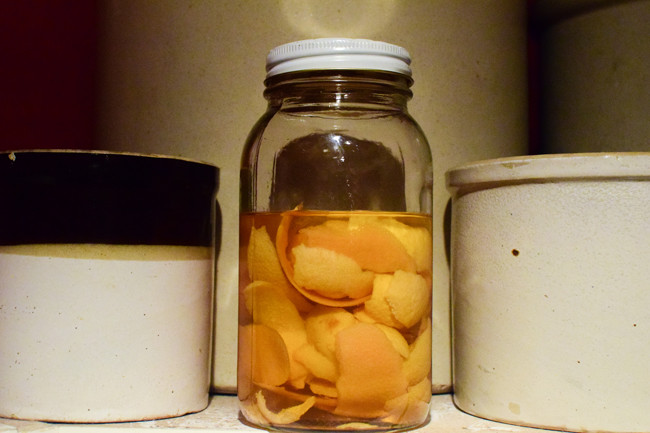
Despite its complicated flavor profile, limoncello, the Italian lemon liqueur, is simple to make. The majority of “prep” time is spent sitting and watching the bottles of liquor-soaked lemon peel. For the holidays this year, a bottle of DIY limoncello may be the answer for those hard-to-buy-for friends. For about $50, you can make eight 10-ounce jars of this crowd-pleasing digestivo.
Your project begins at the liquor store, where you should purchase a liter of Everclear (151 proof, about $25-$30) or 100-proof vodka. Eighty-proof vodka will work in a pinch, but the stronger the better for leaching the flavor from the citrus. The stronger the spirit, the more water and sugar you will have to add later.
Next, buy a bag of about 10 medium-sized organic lemons, and if you’re feeling adventurous, a few grapefruits. With a potato peeler, gently remove the rind from the fruits, trying to get as little of the pith (the spongy white part underneath the peel) as possible — it can add an unwanted astringency.

Watch out for your fingers — a pen-style peeler will work better than the Y-shaped style. Go slowly and carefully, and your fingers will remain intact. To avoid wasting peeled lemons, juice them, and use the juice as a mixer for cocktails, or add it to soda water in a 50:50 ratio for a spritzy lemonade (add a little simple syrup to balance the sourness).
Put the peels into a glass jar of at least 1.5-liter capacity that can be sealed effectively. A jar with a wide mouth is easiest to work with. Pour the grain alcohol over the peels, seal the jar, and shake it a little to eliminate any air pockets. Store the jar at room temperature, away from direct sunlight, checking every few days to enjoy the increasingly yellow coloration.
It can take anywhere from four days to a month for all the citrus flavor to be extracted from the peels, so if you’re planning to make this for gifts for the holidays, get on it soon. The majority of flavor transfer occurs during the first four days, so that is the bare minimum for letting the mixture sit. In the meantime, find some cute jars or bottles to hold the final product, and as a finishing touch, get some festive labels.
After waiting patiently, open the jar holding the alcohol and peels, and using a strainer lined with a coffee filter, pour the contents into a one-gallon pitcher (or something large enough to hold 2 to 3 liters of liquid). The liqueur should strain easily, but towards the end you may need to move the liquid around in the strainer so all of it pours through the peels. The result should be sunshine yellow with a strong alcohol burn smell. Compost the peels.
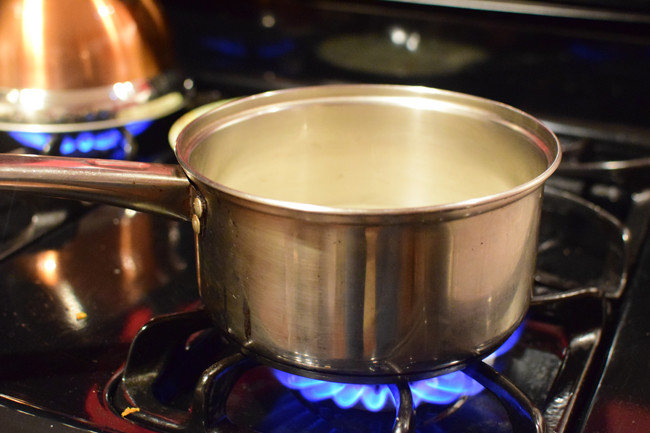
Next comes the hardest part: combining the citrus-infused liquor with simple syrup and water. This is also where artistry comes into play. Start by making about 3 cups of simple syrup. Simple syrup is made at a ratio of 1 cup of water to 1 cup of sugar; since we’re making 3 cups, add 3 cups of sugar and 3 cups of water to a 1½-quart pot. Bring the mixture to a boil, and let it simmer until clear. You may not use it all, but if you have extra, you can add it to the soda-water lemonade drinks mentioned earlier.
After letting the simple syrup cool, start the mixing process by adding 1 cup of simple syrup and 1 cup of cool water to the alcohol mixture. The concoction will turn a cloudy yellow instantly, indicating that a sufficient amount of citrus oils are present in the high-alcohol spirit. At this point our limoncello still tasted too strong and lacked the sweetness to make an Everclear-based liquor palatable, so in the end, we added a total of 3 cups of simple syrup and 3 cups of water.
Be careful not to add too much water and syrup because this will dilute the citrus flavor you worked so hard to produce and will result in too low an alcohol content. The ideal range is 28 to 32 percent ABV. Stop adding water and simple syrup at four cups each. When you’re ready, pour the limoncello into your gift receptacles (or into an appropriate receptacle for sampling).
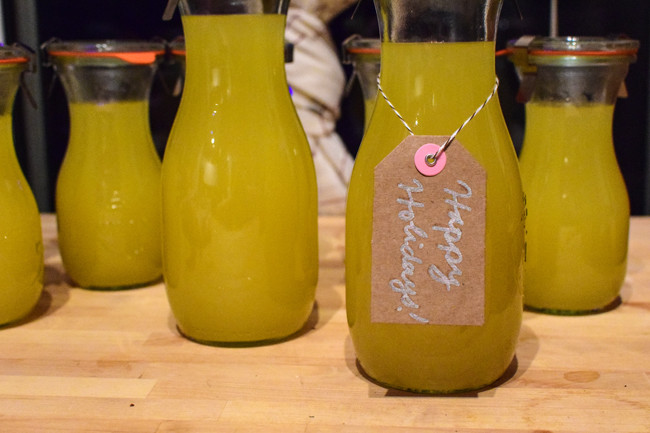
Limoncello is best served after being chilled for four hours. Our liqueur was sweet but not too syrupy, and bitter but not astringent. It went down easily without an afterburn of alcohol. Since we added about 2.5 liters of nonalcoholic liquid to a liter of 151-proof grain alcohol, the resulting concoction was about 31 percent ABV, just a little more alcoholic than a standard flavored vodka.
Served on ice or in cocktails, the result is almost creamy. The small grapefruit addition, while somewhat uncouth, adds depth and cuts some of the sharpness of the lemon while accenting its sparkly tartness. Paired with a doughy dessert, limoncello is a satisfyingly, smooth nightcap. Buon appetito!
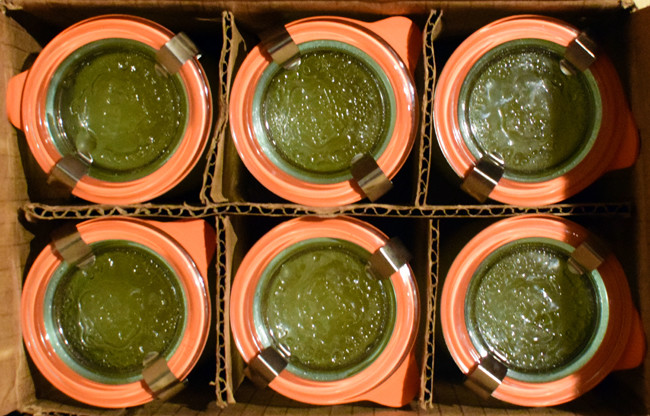

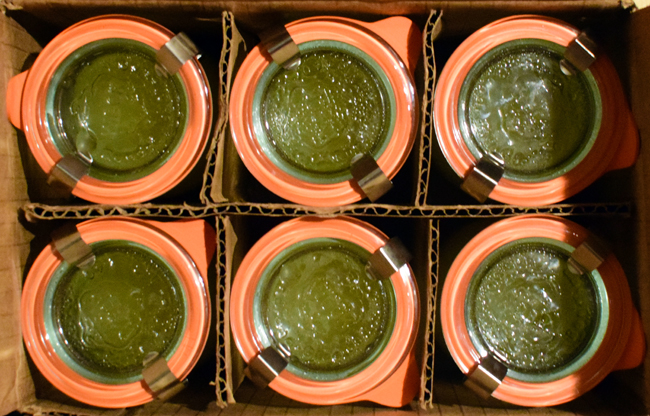
My recommendation would be to use only the zest in your ethanol of choice (I use Everclear). Trying to shave the citrus as in your photographs risks too much of the pith-unwanted astringency is an understatement! Using just the zest avoids that possibility. Strain out with cheesecloth.
If your goal is 3 cups of simple syrup, 1 cup each of sugar and water won’t get you there. You would need almost double that.
Thanks, Max! The story has been amended for clarity, we appreciate the note.
Thanks for the recipe! While I found this too late for Christmas gifts, I now have the makings of a great hostess gift for New Years.